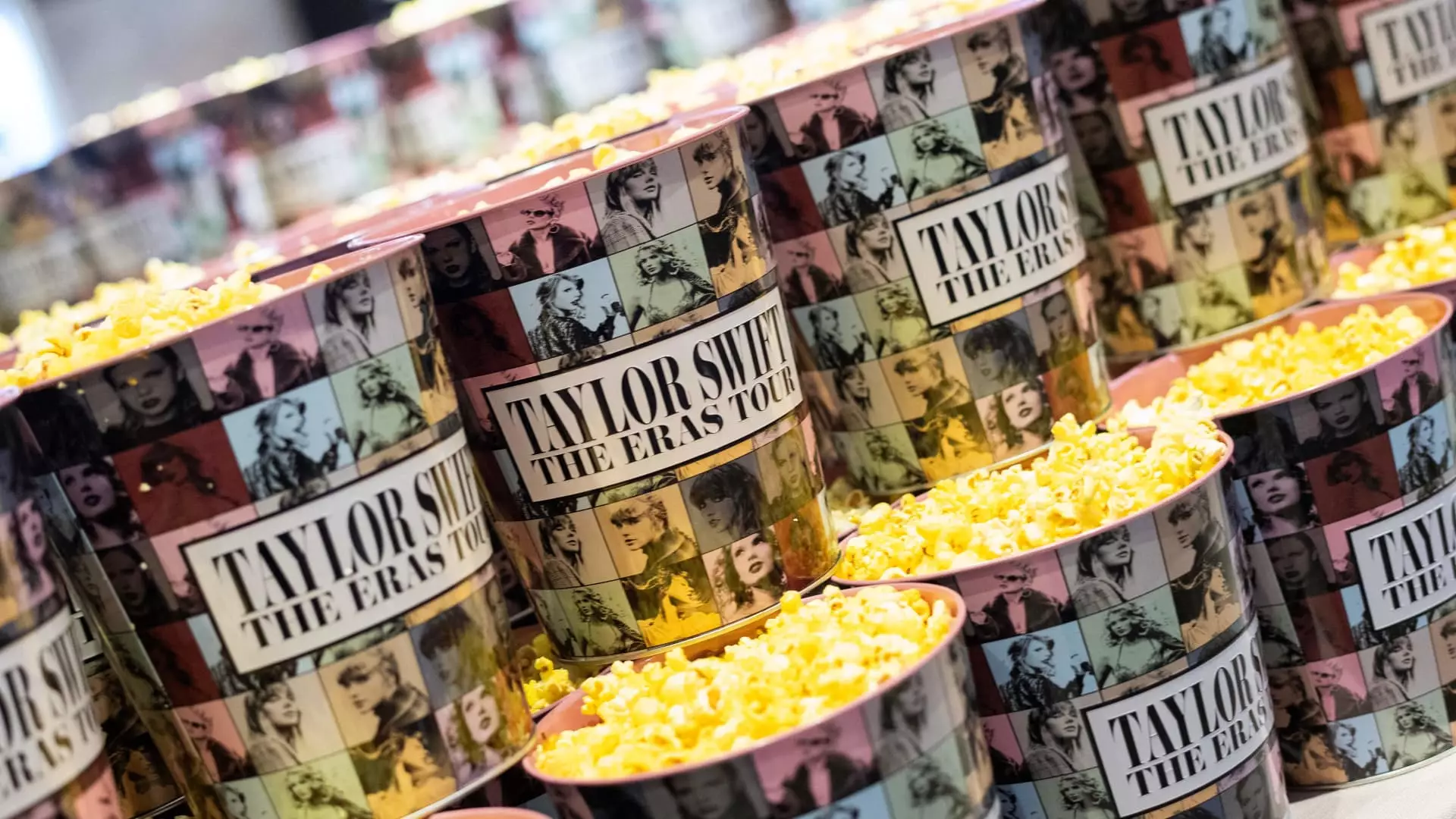In an era where the cinematic experience is continuously evolving, theaters are now realizing the potential profit in novelty merchandise, particularly popcorn buckets. For many years, popcorn was merely a companion to films, serving as a crunchy snack with each cinematic performance. However, the recent trend highlights a shift in how moviegoers perceive these once-ordinary receptacles, evolving them into collectible commodities.
Popcorn buckets have transitioned from simple containers to sought-after collectibles. The onset of this trend began with notable releases like “Taylor Swift: The Eras Tour,” which shattered expectations with its high demand for novelty popcorn buckets. AMC’s CEO, Adam Aron, noted that this dynamic not only brought in $65 million from merchandise sales over the year but also increased awareness and interest in cinema as an experience beyond just watching a movie. The idea that patrons can walk away from their theater experience with a unique popcorn bucket adds to the overall value of attending a film, transforming the outing into a memorable event.
Meanwhile, competitors in the market—such as Cinemark and Regal—have followed suit, incorporating unique popcorn buckets to enhance their concession offerings. These specialty items not only entice viewers but also foster the idea that attending the movie during its opening weekend becomes an event enhanced by exclusive merchandise. Paul Farnsworth, from B&B Theatres, understood early on that rebuilding audience habits was critical post-COVID, making the thematic allure of collectible popcorn buckets a strategic move to rekindle interest in movie outings.
The pandemic wreaked havoc on the film industry, leading to a shortage of theatrical releases and subsequent declines in box office revenue. In 2024, theater ticket sales plummeted by approximately 3.4%, totaling about $8.74 billion. Yet, as theaters emerged from the pandemic’s shadow, the introduction of exclusive popcorn buckets offered a new lifeline. These buckets appeal to nostalgia and the desire for unique memorabilia, adding a personal touch to the movie experience, which can remain long after the credits roll.
Farnsworth has voiced the importance of these unique offerings: they are not just about profit but about establishing an indelible memory associated with the movie experience. They become objects of remembrance, allowing viewers to cherish not just the film, but the entire outing. Cinemark’s success with their “Scream VI” bucket illustrated this trend perfectly, with items literally flying off the shelves and creating sell-out situations, highlighting a previously untapped market.
The culture surrounding collectibles fuels a sense of urgency, affectionately termed FOMO—fear of missing out. The rush around these specialty popcorn buckets is not merely about their contents but the experience they promise. This paradigm shift emphasizes the impact of social media in today’s world; buzz generated by unique merchandise, like the infamous “Dune” popcorn bucket shaped after sandworms, creates excitement and drives people to seek out the seemingly scarce items.
With resales reaching upwards of $210 on platforms like eBay for what started as a $24.99 bucket, the secondary market further escalates this notion of urgency and scarcity. The crossover of film and collectible culture reflects a broader trend within consumer marketing, where items gain value not only through utility but also desirability and exclusive nature.
As we look towards the future, the film industry is poised for a robust surge in blockbuster releases, with significant movies lined up through 2026. Major titles like “Captain America: Brave New World” and “Super Mario Bros. 2” create plenty of opportunities for theaters to introduce themed merchandise, particularly popcorn buckets tailored to the films’ aesthetics.
Going forward, theaters like AMC plan to increase their merchandise stock, recognizing the economic potential of collectible items. By preparing larger quantities, theaters can mitigate sell-out scenarios, capitalizing on the sustained enthusiasm for film-themed merchandise. This evolved strategy will enable them to cater to the public’s desire for unique collectibles, while still driving revenue through standard concession sales. The integration of marketing expertise, captured through companies like Zinc, means that exclusive popcorn buckets can be innovatively crafted and marketed to ensure they resonate well with audiences.
Collectible popcorn buckets have cemented their place as essential appendages to the cinematic experience. While they embody the simple act of holding popcorn, they also symbolize the connection between viewers and stories told on-screen. These items enhance audience engagement, create shared experiences, and invite consumers to traverse the line between cinema and commerce.
As the film industry continues to adapt and evolve, popcorn buckets represent much more than mere packaging. They have become an integral part of the cinematic economy, bridging the gap between product, audience engagement, and the experiences they hold. The trajectory suggests a blossoming future where merchandise may become as critical to the theater experience as the films themselves.

